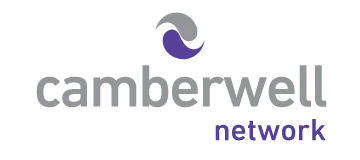Australians facing financial pressure from rising grocery prices, fuel, rent, and utility costs are set to receive relief through the Centrelink Cost of Living Payment in August 2025.
Announced as part of the federal government’s welfare strategy, this one-off payment will provide targeted support to pensioners, carers, families, students, and jobseekers.
With payments scheduled to roll out in August 2025, this scheme is designed to offer direct, timely assistance to those most affected by inflation and living cost increases.
What Is the Centrelink Cost of Living Payment?
The Centrelink Cost of Living Payment 2025 is a tax-free, one-time cash payment to eligible Australians. It does not count as income for other benefits and will be deposited automatically into bank accounts.
This means you don’t need to apply—if you meet the criteria, Services Australia will issue the payment directly to you.
The initiative complements other government supports such as energy bill relief, rent assistance, and childcare subsidies, all aimed at reducing financial strain.
Eligibility for the August 2025 Payment
To qualify, you must be receiving one of the following benefits on 1 August 2025:
- Age Pension
- Disability Support Pension
- Carer Payment
- JobSeeker Payment
- Parenting Payment
- Youth Allowance
- Austudy/Abstudy
- Veteran Payment
- Commonwealth Seniors Health Card (CSHC) holders
Certain low-income households may also be eligible if they meet the income and assets test requirements listed with Centrelink.
Payment Amounts & Payout Schedule
The amount you receive depends on the type of payment you’re already getting. The August 2025 Cost of Living Payment will be issued in phases to avoid system overload.
| Recipient Category | Payment Amount (AUD) | Payout Date Range |
|---|---|---|
| Pensioners & Carers | $300 | 12–16 August 2025 |
| JobSeekers & Parenting | $250 | 14–18 August 2025 |
| Youth Allowance & Austudy | $150 | 19–22 August 2025 |
| Veterans & CSHC Holders | $300 | 20–25 August 2025 |
Payments will appear in accounts under the reference “Cost of Living Support 2025” and will follow your usual Centrelink pay cycle.
How This Payment Helps Australians
The August 2025 payment is designed as a financial cushion to help households cover immediate expenses. Here’s how recipients are expected to benefit:
- Paying utility and energy bills during winter months
- Purchasing essential groceries as food prices continue to rise
- Catching up on medical or pharmaceutical costs
- Supporting education-related expenses for children and students
- Reducing debt pressure from late fees or outstanding bills
Although the payment is temporary, it plays an important role in giving households short-term financial relief during a period of high inflation.
Broader Government Support
In addition to this one-time payment, Australians may also benefit from:
- Energy Bill Relief rebates
- Rent Assistance increases
- Childcare subsidy expansions
- Minimum wage increases introduced in 2025
Together, these measures form part of the government’s Plan for Cost of Living Relief, ensuring households can better manage expenses while the economy stabilises.
The Centrelink Cost of Living Payment August 2025 offers crucial financial support to Australians impacted by rising costs.
With amounts between $150 and $300, and automatic distribution to eligible claimants, this payment will help ease the burden of inflation-driven expenses.
By supporting vulnerable groups—pensioners, carers, jobseekers, students, and veterans—the government aims to provide immediate relief while broader economic strategies continue to take effect.
FAQs
Do I need to apply for the Centrelink Cost of Living Payment?
No, the payment is automatic for eligible recipients based on Centrelink records as of 1 August 2025.
How much will I receive?
Amounts range from $150 to $300, depending on your current benefit type, with pensioners, carers, and veterans receiving the highest support.
When will I get the payment?
Payments will be rolled out between 12 and 25 August 2025, depending on your benefit category and regular pay cycle.

